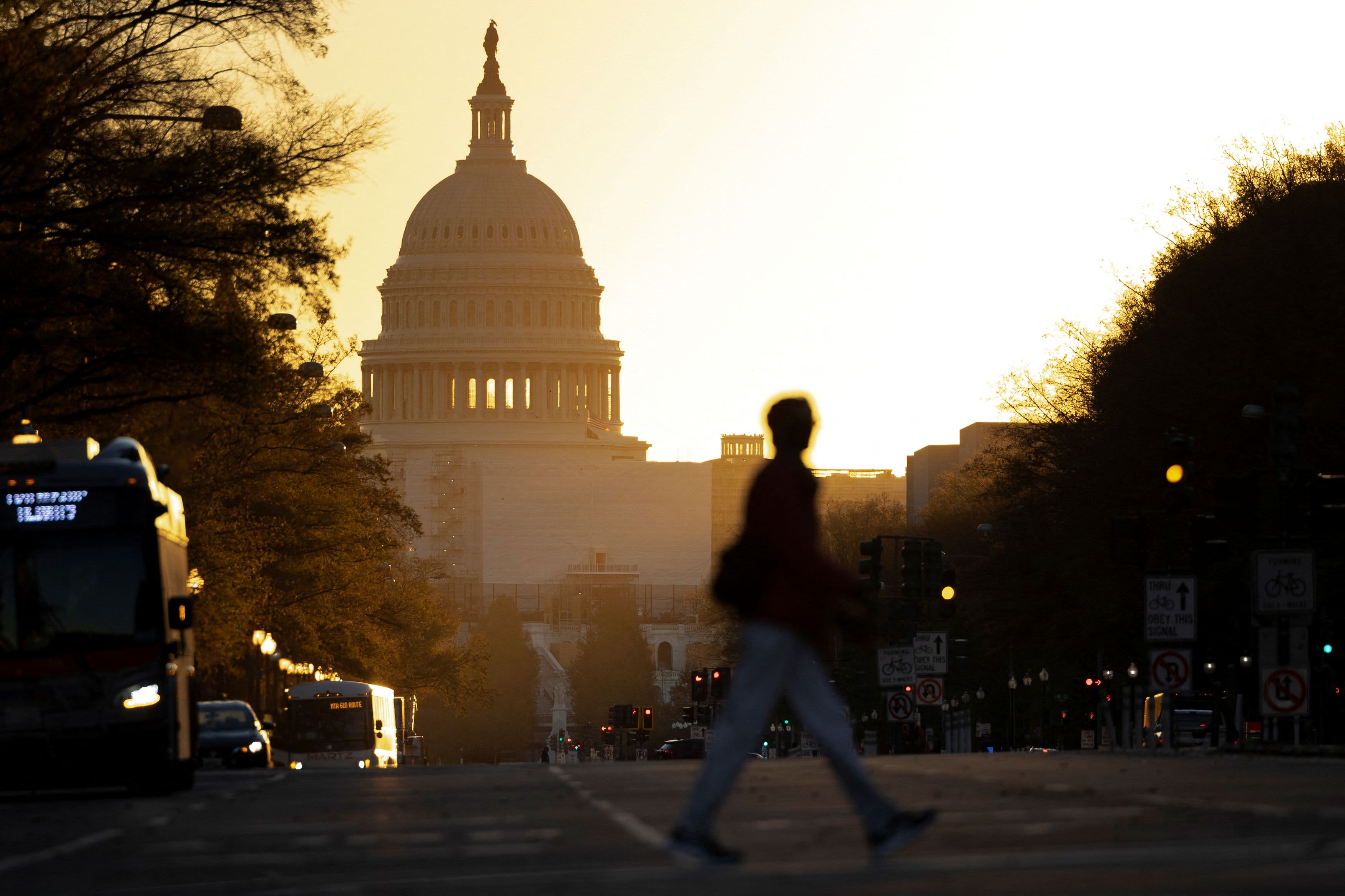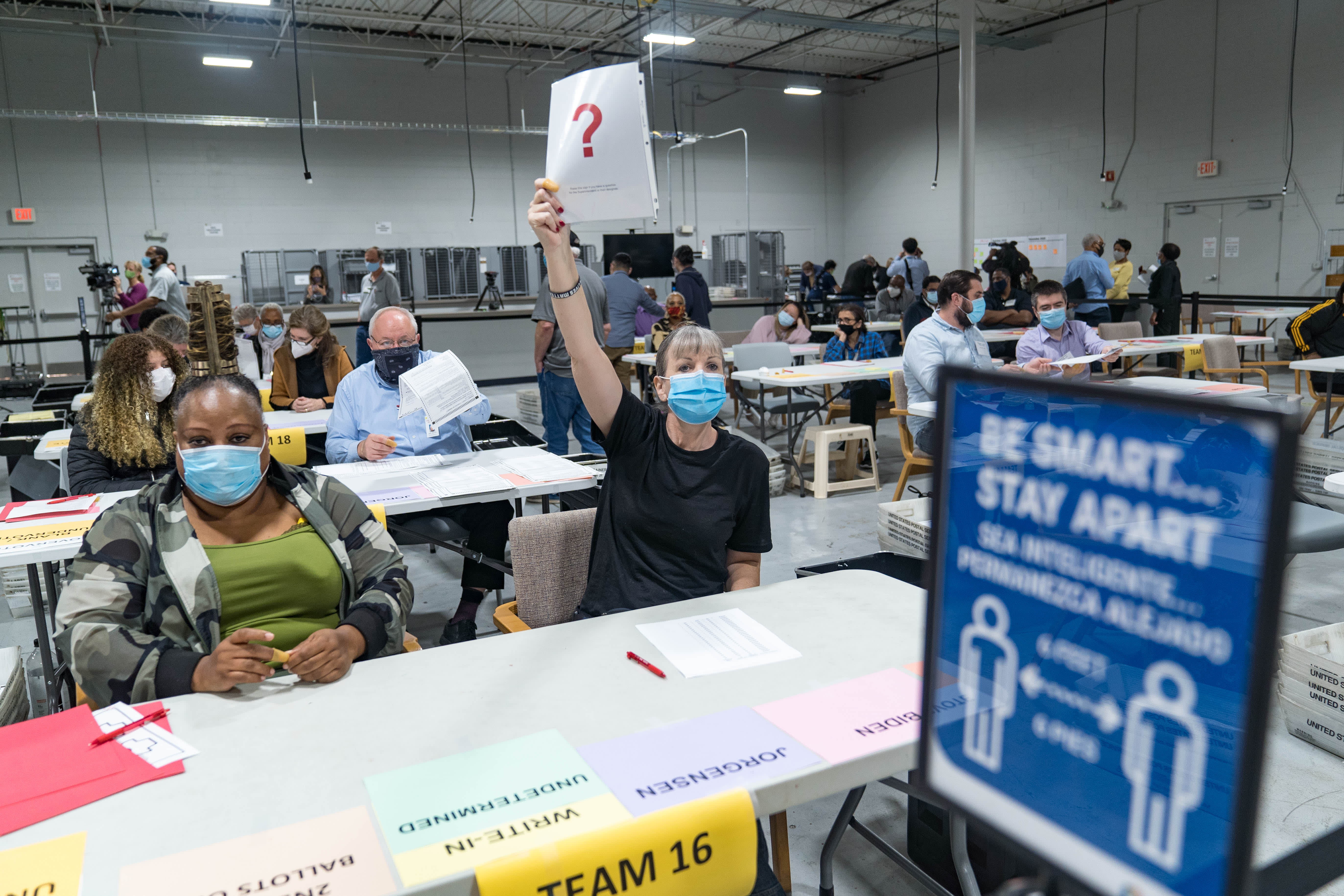
American elections occasionally provide a moment of national unity. This is not one of them.
The 2022 midterms, which decide the balance of power in Congress, have been bitter, fractious and expensive in the billions. Even the very notion of democracy and the civil ritual of voting was under attack.
President Joe Biden, presiding over narrow Democratic control of Washington, has seen his approval ratings buffeted by soaring inflation, fears about crime and lingering effects of the pandemic.
Republicans, meanwhile, have had to deal with a rift between the party's establishment wing and President Donald Trump. His enthusiastic support for far-right, first-time candidates fueled divisive primaries while testing general election voters' acceptance of nominees whose biographies likely would have doomed their campaigns in years past.
Here are some early takeaways from this year's election:
History Lesson
It’s called history for a reason. The party that celebrates winning the White House is usually mourning a loss in the midterms two years later.
Add to that historical pattern an economy battered by inflation and teetering on recession, throw in fears about crime, and the outcome is almost assured.
For Biden and House Democrats, the likelihood of keeping power in the lower chamber of Congress was always in doubt. Republicans have expected to gain enough seats to retake the majority. If successful, they also have plans to neuter Biden's agenda for the next two years.
Since 1906, there have been only three midterms in which the party of the president in power gained House seats: 1934, when the country was struggling with a Depression, 1998 when the U.S. was buoyed by a soaring economy (The GOP retained control of the House) and 2002, when President George W. Bush had a sky-high approval rating in the national feeling of unity after the Sept. 11 attacks.
Other midterms have typically ushered double digit losses for the president's party — and, in recent decades, a change in congressional power.
House Minority Leader Kevin McCarthy, who is in line to become the next speaker, has indicated his Republican Party is itching for a fight over increasing the nation’s debt limit, a tack that could take the U.S. to the brink of a all-but-unthinkable credit default. Some Republicans are also far more skeptical than Democrats of continuing to aid Ukraine in its war with Russia.
Others have even talked about impeaching Biden, who joked that they have yet to decide over what.
That Wave Just Got 10 Feet Shorter
Just how far a red wave will carry Republicans won’t likely be known for weeks as states that conduct their elections largely by mail, such a California, continue counting votes.
One thing is certain: It’s unlikely to match 2010′s tea party wave, which netted 63 seats, or the Newt Gingrich-led House takeover of 1994, which ousted 54 Democrats and flipped the chamber to GOP control for the first time since the presidency of Dwight Eisenhower.
The reason those won't happen? There just aren’t that many competitive seats.
In recent decades, congressional districts have been redrawn to shore up incumbents and solidify party power.
Under the most recent maps adopted following the 2020 census, there are just 30 seats that Biden won by less than 8 percentage points and 30 seats Trump won by less than 8 points, according to the Brennan Center for Justice. That’s a 14 percent drop in competitive seats from 2018.
The end result? Far less interest in compromise and more gridlock in the halls of Congress.
Most Expensive Midterms
The 2022 elections are on track to cost $16.7 billion at the state and federal level, making them the most expensive midterms ever, according to the nonpartisan OpenSecrets.
For perspective: The contests will nearly double the cost of the 2010 midterm elections, more than double the 2014 midterms and are on pace to roughly equal the 2022 gross domestic product of Mongolia.
The spending arms race is a byproduct of the Supreme Court's landmark 2010 Citizens United decision, which cleared the way for billionaires and other wealthy donors to influence the outcomes of elections by pouring essentially unlimited sums into political campaigns.
At least $1.1 billion given at the federal level so far this election season has come from a small coterie of donors, many of whom have favored conservative causes.
“When you look at the top 25 individual donors, conservative donors heavily outweigh liberal donors by $200 million,” said Brendan Glavin, a senior data analyst for OpenSecrets. “There’s a big skew.”
Tech billionaire Peter Thiel ($32.6 million), shipping goods magnate Richard Uihlein ($80.7 million), hedge fund manager Ken Griffin (68.5 million) and Timothy Mellon, an heir to to a Gilded Age Fortune who gave $40 million, are among the top conservative donors.
On the liberal side, hedge fund founder George Soros gave the most ($128 million), though much of it has yet to be spent. Sam Bankman Fried, a liberal 30-year-old cryptocurrency billionaire, gave $39.8 million.



